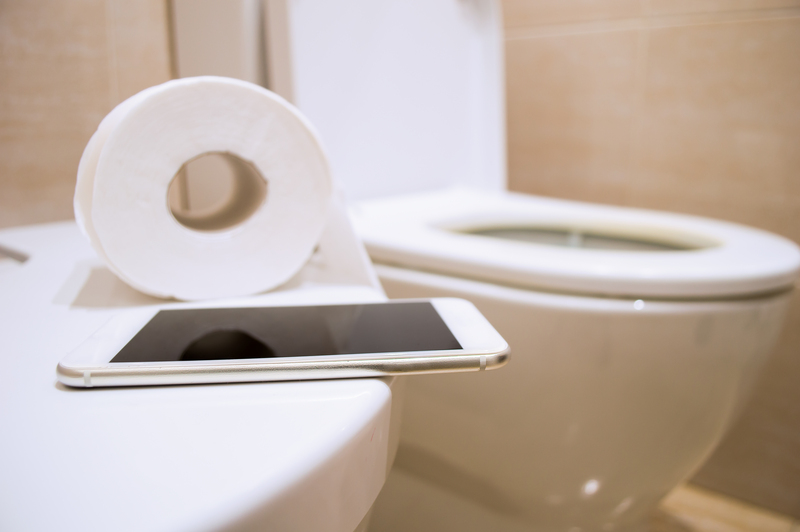Transform Your Space: Remove Damp Odors
Posted on 15/06/2025
Transform Your Space: Remove Damp Odors for Good
Are damp odors plaguing your home or office space? That unmistakable musty smell can easily make an otherwise clean environment feel unwelcoming, unhealthy, and unappealing. Removing damp odors isn't just about making your rooms smell pleasant--it's also about cultivating a healthier living environment and protecting your property from mold and mildew damage. In this comprehensive guide, you'll discover proven strategies, tips, and solutions to eliminate musty scents, prevent their return, and truly revitalize your living space.

Understanding the Source of Damp Odors
Before you can effectively remove damp odors, it's crucial to understand what causes them. Musty odors are often a sign that mold, mildew, or excess moisture is present in your environment. Here are some common culprits behind these persistent smells:
- Poor Ventilation: Spaces with inadequate airflow trap moisture and encourage mold growth.
- Leaking Pipes: Even slight leaks can create damp patches that become breeding grounds for odor.
- Flooding or Water Incidents: Previous floods or spills can leave behind lingering moisture.
- Basement and Crawl Spaces: These areas are particularly susceptible to high humidity and condensation.
- Roof or Wall Leaks: Hidden leaks introduce water, activating odor-causing bacteria and fungi.
- Wet Laundry or Carpets: Damp textiles hold onto moisture, accelerating the development of smells.
Identifying where damp odors are coming from is your first essential step in the journey to a fresh, transformed space.
Detecting and Assessing Musty Odors
The Signs of Moisture Problems
Some signs of excessive moisture and musty odors include:
- A persistent earthy or stale smell, especially in closed spaces
- Visible mold patches on walls, ceilings, or floors
- Water stains, bubbling paint, or peeling wallpaper
- Damp spots or wet surfaces, particularly after rain
- Condensation on windows, pipes, or cold surfaces
Testing for Hidden Dampness
If you suspect hidden moisture is causing odors, try these techniques:
- Moisture Meter: Use this device to test humidity levels in walls or floors.
- Infrared Thermometer: Detect cold or wet spots that may harbor moisture.
- DIY Paper Test: Tape a piece of aluminum foil or plastic wrap to a suspected area for 24 hours. If condensation appears, moisture is present.
Remember, the quicker you identify the source, the sooner you can take action on removing damp odors.
Effective Strategies To Remove Damp Odors
Ventilate Your Space
- Open Windows and Doors: Letting in fresh air is the simplest way to disperse musty odors and reduce humidity levels.
- Use Exhaust Fans: Employ kitchen and bathroom fans to drive moist air outside.
- Install Air Circulators: Ceiling fans and portable fans improve air flow, preventing stagnation.
Control Moisture Effectively
- Fix Leaks Immediately: Repair leaky pipes, gutters, or roofs to cut off the source of water.
- Use a Dehumidifier: Keeping humidity levels below 60% makes it harder for odors to persist.
- Seal Foundation and Crawl Spaces: Applying waterproof paint or vapor barriers prevents moisture intrusion.
Deep Clean Odor-Harboring Surfaces
Items that trap the most odor include carpets, rugs, upholstery, curtains, and porous materials. Here's how to treat them:
- Wash Fabrics Thoroughly: Launder curtains, bedding, and removable fabric covers in hot water.
- Steam Clean Carpets and Upholstery: Professional steam cleaning kills mold spores and removes trapped odors.
- Clean Hard Surfaces: A mix of vinegar and water or special mold cleaners removes odor from tile, wood, and metal.
Kill Mold and Mildew at the Source
- Use Mold-Removing Cleaners: Apply products containing bleach or hydrogen peroxide to visible mold patches.
- Scrub with Natural Solutions: Baking soda, vinegar, and tea tree oil can combat light mold growth.
- Dispose of Severely Damaged Items: Heavily infested tiles, plaster, or insulation may require full replacement.
Note: Always wear gloves, masks, and goggles when handling mold or harsh chemicals.
Neutralize and Absorb Damp Odors Naturally
- Baking Soda: Sprinkle on carpets and fabrics, let sit, then vacuum. It absorbs musty smells.
- Activated Charcoal: Great for closets and basements, charcoal pulls moisture and odors from the air.
- White Vinegar: Place bowls around odorous rooms, or use in cleaning solutions to break down lingering smells.
Innovative Solutions to Remove Damp Odors
Try Commercial Odor Eliminators
For stubborn cases, specialized products may be needed:
- Enzymatic Cleaners: These break down organic odor compounds at a molecular level.
- Ozone Generators: Ozone machines oxidize and destroy airborne contaminants, but must be used with caution and only in unoccupied spaces.
- HEPA Air Purifiers: Filters trap spores, dust, and odors, continually refreshing your indoor air.
Scent Solutions for Quick Results
- Essential Oil Diffusers: Oils like eucalyptus, tea tree, or lemon clean the air and mask residual odors.
- Scented Candles and Sanitizing Sprays: Choose those specifically designed to combat mustiness rather than simply cover it up.
*While these products help freshen your space, always address the underlying moisture or you risk odors returning!*
Long-Term Steps to Prevent Damp Smells From Returning
Maintain Proper Home Humidity
- Keep household humidity ideally between 30-50%.
- Regularly empty and clean dehumidifiers.
- Install humidity monitors in trouble spots like basements and bathrooms.
Boost Housekeeping Habits
- Vacuum carpets and launder fabrics at least weekly.
- Dry wet towels and laundry promptly--never let them sit in hampers!
- Wipe down condensation from windows and sills every morning.
Upgrade Home Ventilation
- Add vent fans to bathrooms, laundry rooms, and kitchens if not already present.
- Regularly open windows during dry weather to improve airflow.
- Consider a whole-home air exchanger for energy-efficient fresh air imports.
Regular Inspection
- Check roofs, attics, foundations, and pipes for signs of leaks every season.
- Inspect HVAC systems and replace filters as needed.
- Look for early signs of mold or mildew--the sooner you spot it, the easier it is to treat and prevent smells.
Special Areas That Frequently Harbor Damp Odors
Basements and Crawl Spaces
- Install a vapor barrier on the floor and walls.
- Seal windows and doors to prevent rainwater seepage.
- Use a sump pump in flood-prone areas.
Bathrooms
- Clean tiles and grout regularly to prevent mildew.
- Use shower and bath fans for 15 minutes after use.
- Keep shower curtains open for air circulation, or replace them if they smell musty.
Closets
- Use moisture absorbers or silica gel packs in these enclosed spaces.
- Store only dry clothes and towels to prevent odor buildup.
- Leave doors cracked open when possible to enable air circulation.
Health Risks and Why You Should Remove Damp Odors Quickly
Mold and mildew are more than just smelly--they can be dangerous to your health. Prolonged exposure, especially in children, the elderly, or those with respiratory issues, can trigger allergies, asthma, headaches, and other health problems. Mold spores in particular are known for their ability to trigger:
- Sneezing and nasal congestion
- Skin rashes and eye irritation
- Worsening asthma symptoms
- In rare cases, serious lung infections
Eliminating damp odors and their underlying causes is a vital step toward establishing a safe, comfortable, and inviting home.

Frequently Asked Questions: Remove Damp Odors
Can I remove musty odors without professional help?
Yes! Most damp smells can be tackled with diligent cleaning, improved ventilation, and by following the practical tips above. However, for extensive mold infestations--especially black mold--it's best to consult professionals.
How long does it take to get rid of damp odors?
This depends on the severity and the underlying cause. Odors from minor moisture exposure often clear up in a few days with proper cleaning and drying. Stubborn smells due to entrenched mold or water damage may take longer, especially if structural repairs are needed.
Are chemical air fresheners safe for damp odor removal?
While air fresheners can temporarily mask musty scents, they don't address the root issue and can introduce respiratory irritants. Always prioritize odor removal at the source through cleaning and moisture control.
What's the best natural way to get rid of damp smells?
Baking soda, vinegar, and activated charcoal are effective, affordable solutions. Regular cleaning and sunlight exposure also work wonders in neutralizing musty odors naturally.
Conclusion: Enjoy a Fresh, Inviting Space Free from Damp Odors
Transforming your space doesn't have to be a daunting process. By understanding the root causes of damp odors, diligently cleaning, controlling moisture, and maintaining a well-ventilated home, you can eliminate musty smells and promote a healthier atmosphere for your family, guests, or employees.
Take action today--inspect your home, clean problem areas, implement moisture control strategies, and enjoy the remarkable difference as you remove damp odors and reclaim the full potential of your living or work area.
Remember:
- Regular maintenance is the secret to lasting freshness.
- Don't wait--early intervention is key to protecting your property and your health!
- If the problem persists or worsens, consult a professional for in-depth mold remediation.
Transform your space and breathe easy--remove damp odors for good!




